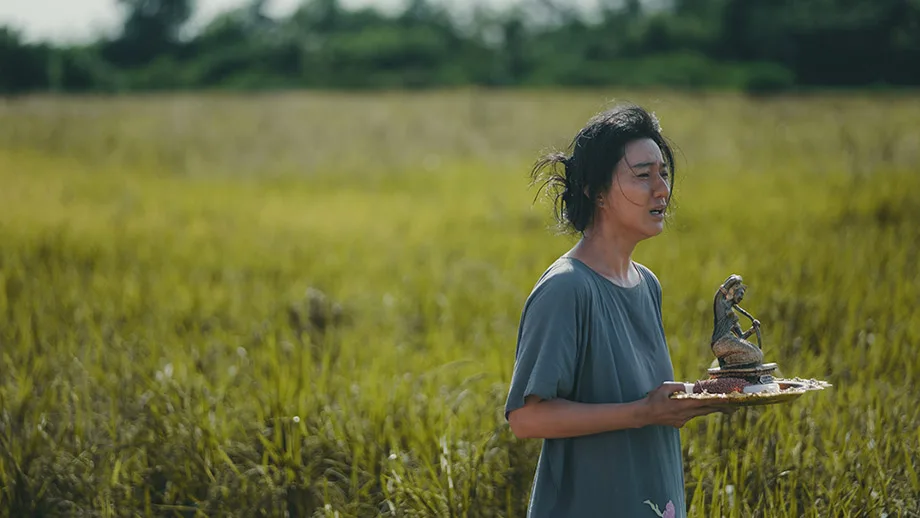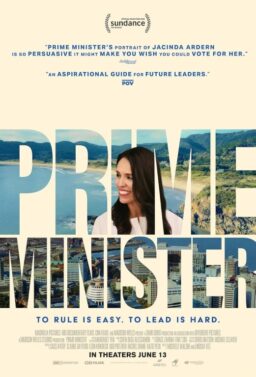In my first dispatch from the 2025 edition of the Tokyo International Film Festival, “Journey into Sato Tadao” director Terasaki Mizuho describes movies as “greetings,” small, friendly gestures that introduce something essential about a place and its people to the world. Greetings are exchanged whenever travelers from different countries come together, and the spirit of introduction was very much present at Tokyo’s TIFF (as opposed to the Toronto version) this year.
New Japanese films form the core of the festival’s programming: It sold out before I could get a ticket, but this year, TIFF hosted the premiere of “Tokyo Taxi,” the new film from prolific 94-year-old master filmmaker Yoji Yamada; the opening-night selection, the feel-good drama “Climbing for Life,” was also a domestic film. My two favorite films from Tokyo this year were both Japanese productions, which we’ll discuss in my next dispatch. But the festival’s approach to curating Asian cinema is worth a look on its own.
TIFF’s “Asia Now” section, which spotlights directors with three or fewer feature-film credits, covers a geographical area that spans from Turkey to Japan—more than 8,000 kilometers (5,000+ miles) in total. The broader sections of the festival are also oriented towards pan-Asian cinema, with a sprinkling of North American and European titles mixed in. It’s the inverse of what I generally experience at North American film festivals, and it’s refreshing to experience cinema curation from a perspective that doesn’t center America, particularly at a time when I, personally, am not proud to be an American.
This year, Southeast Asian cinema had a particularly strong showing in Tokyo, with three films from the region featured on the main competition slate. The first of them, “Mother Bhumi,” screened on opening night, in a large concert hall (located, like so many places in Japan, on the top floor of a shopping mall) where hundreds of fans came out to see Chinese A-lister Fan Bingbing in what was touted as a transformative role. And indeed, if you didn’t know she was the star of the film going in, it might take a while before you recognized the “X-Men: Days of Future Past” actress giving a totally de-glammed, extremely committed performance in this film.
Fan stars as Hong Im, a respected faith healer and unofficial leader of a Malaysian Chinese community in the verdant Bujang Valley. The region is a melting pot of religions, languages, and ethnicities, and the peace among them is being tested as the story begins. “Mother Bhumi” is set in the 1990s, during a period where lands reappropriated by the British were being returned to their original owners by the Malaysian government; using her connections to a local official, Hong has appointed herself as an advocate for ethnic Chinese landowners set to lose their properties under the new law. Her mission has a tragic, futile air. But what, exactly, is Hong protecting? And why?
This character beat is left unexplored and has faded away by the time the story takes a dramatic turn into Southeast Asian black-magic practices in its third act. Local audiences might get more out of the political nuances. Still, director Chong Keat Aun’s understated, highly symbolic approach to storytelling—simultaneously both vague and on-the-nose—means that, for international viewers, the primary appeal here is the craft.
The direction and cinematography in “Mother Bhumi” are stunning, favoring long, lingering wide shots composed with an eye for the movement of objects within the frame. Midway through, Chong and cinematographer Leung Ming Kai glide the camera over the body of a woman mid-exorcism, and the contrast between the elegance of the shot and the violence of her seizure is breathtaking. Composers Yii Kah Hoe and Chong Keat Aun also do striking, resonant work, but unless you’re the kind of cinephile who can justify a two-hour film as sort of a slow-motion art exhibit, Chong’s film will likely defy both patience and sense.

Pen-ek Ratanaruang’s “Morte Cucina” also moves to its own dreamy rhythm, one that’s a little more tongue-in-cheek than that of Chong’s film. “Morte Cucina” is the epitome of an international co-production, opening with what seems like dozens of company logos, and blending influences and talent from across the region. The film reunites Ratanaruang with Japanese actor Tadanobu Asano, who starred in two of the Thai director’s previous films; here, he appears as a pretentious artist who hangs empty picture frames and calls it “deep.” He’s one of the film’s funnier elements, which never gets too heavy despite some traumatic plot points; instead, the tone is deadpan magical realism, incorporated here more intriguingly than in “Mother Bhumi.”
“Morte Cucina” also reunites the director with Hong Kong-based cinematographer Christopher Doyle, whose work with Wong Kar-wai is among the most sensual in cinema. Here, Doyle applies that sensibility to lusty shots of garlic and chilis sautéing in iridescent woks, and of fresh herbs being chopped with sharp metal cleavers, as the film’s protagonist, Sao (Bella Boonsang), pursues her dream of becoming a professional chef. She achieves it, almost incidentally, after a chance encounter with a man from her past leads Sao into a bizarre supernatural revenge plot.
I won’t spoil it here, but Ratanaruang’s film speaks to the codependent nature of love and hate, and it makes a highly compelling argument for getting some Thai food after the movie. Doyle said as much onstage after the premiere of “Morte Cucina” in Tokyo, quipping about “food porn” and apologizing to the onstage translator for making her repeat his fart jokes “in polite Japanese.” Ratanaruang and Boonsang were unfazed—apparently, Doyle’s like this all the time.

Cambodian filmmaker Rithy Panh is also an ambassador for his country’s cinema scene: Panh is the premier documentarian of the destruction brought by the Khmer Rouge, and hints of that dark period appear even in his mostly unrelated new film, “We Are the Fruits of the Forest.” We hear references to the indigenous Bunong people being persecuted during the Pol Pot years, but the primary villain of this film is capitalism: Over footage of farmers engaging in subsistence practices that have existed for thousands of years, a representative from one village explains the Bunong people’s yearly harvest calendar, and the many ways that it’s been eroded—slowly, at first, then all at onc—by the encroachment of greedy corporate landowners. There are moments of peace, of deep spiritual connection, but these are overshadowed by an inescapable feeling that these people are the Earth’s last line of defense, and we are all failing them.
Pahn’s film lays out how climate change, corporate greed, and colonial conquest have come together to threaten the Bunong way of life; none of these cause-and-effect relationships will be new to informed viewers, but there’s still something incredibly enraging about the fact that even subsistence farmers in rural Cambodia have to worry about debt. The rawness of the film’s environmental message is reflected in its unadorned hand-held camerawork, shot up close and among the people over four immersive years. Fair warning for the vegetarians in the audience: One of the ways that the Bunong survive is by hunting, and Pahn’s camera captures them slaughtering animals for food as unblinkingly as it does other aspects of their lives.

And although it wasn’t in the main competition slate with the three films listed above, the Vietnamese film “Tunnels: Sun in the Dark” is one I sought out specifically for its non-Western perspective. Similarly to “Palestine 36”—which premiered in Toronto and won a major award here in Tokyo—director Bùi Thạc Chuyên’s film looks at a historical conflict from a point of view that’s usually inaccessible to Western viewers. In this case, the film follows a group of Viet Cong guerrilla fighters hiding out in an underground network known as the Chu Chi Tunnels during the Vietnam War.
The film takes a romantic view of war and sacrifice, with a cast of characters whose camaraderie in early scenes is clearly setting the stage for tearjerking heroism later on. And Chuyên delivers, in a series of intense action sequences that use the film’s claustrophobic setting to their advantage as the unit makes a last stand against American soldiers who discover and infiltrate their stronghold. There’s some jaw-droppingly creative nightmare fuel here—think bamboo poles stuffed with poisonous snakes booby-trapped to fall onto intruders’ heads—combined with ticking-clock classics like characters stuck in an underground chamber that’s slowly filling with water.
It’s a rollicking piece of entertainment, and it was incredibly popular in Vietnam, breaking box-office records and swelling a sense of national pride when “Tunnels: Sun in the Dark” was released in local theaters back in April. (“The tunnels are the people’s war,” a captured officer tells an American army unit, giving a speech on the resilience of the Vietnamese spirit before blowing himself up with a hand grenade.) Perhaps predictably, it’s still looking for an American distributor.












